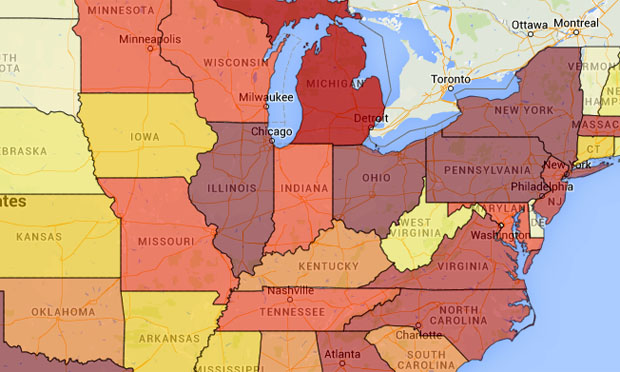In July 2011 the United States passed a demographic milestone, when for the first time the majority of society’s newest members — children under age 1 — were non-white, according to the U.S. Census Bureau. And in the 2012 presidential election, for the first time in U.S. history African Americans voted at a higher rate than white Americans, while the percentage of white voters dropped from 66.2% in 2008 to 64.7%. These findings — coupled with the fact that African American, Hispanic and Asian American communities have all favored Democratic candidates in recent elections — has led to media speculation about potential shifts in American politics.
Scholars Maureen A. Craig and Jennifer A. Richeson, both of Northwestern University, begin a 2014 Psychological Science study by discussing a Census Bureau projection that racial minority groups will make up a majority of the entire U.S. population in 2042. The study — “On the Precipice of a ‘Majority-Minority’ America: Perceived Status Threat From the Racial Demographic Shift Affects White Americans’ Political Ideology” — itself uses four experiments to examine white Americans’ response to such a shift. Specifically, the authors explore whether whites are more likely to support conservative policies and figures once these anticipated changes in racial demographics are made salient.
Each of the four experiments tackles a facet of the question using different social science research methods. The first uses data from the Pew News Interest Index. In it, politically unaffiliated white respondents were randomly assigned one of two survey forms — one made the majority-minority issue salient, the other did not — and after completing the survey, participants were asked which political party garnered more of their support. In the second experiment, the authors tested what mechanism — “group-status threat,” for example — might be the cause of any detected move toward conservatism. Some white Americans from a nationally representative sample were randomly assigned to read about projections that racial minorities would soon constitute a majority of the U.S. population, while others read about another topic. The two groups were then asked questions about perceived threats to their way of life as well as their political opinions. Two final experiments further explored the “group threat” hypothesis, trying to determine if political shifts could be minimized if respondents’ concerns could be alleviated.
Key general findings from the studies include:
- Overall, making the U.S. racial shift salient led to greater endorsement of conservative policies, compared with making nonracial societal shifts salient.
- The conservative shift applies to both race-related and race-neutral policies: “Compared with control participants, participants in the racial-shift condition expressed more support for conservative positions on both race-related issues and more race-neutral policies.”
- One of the reasons for the shift appears to be “perceived group-status threat” or concern about social hierarchy from white Americans: “These experiments provide striking evidence that perceived group-status threat, triggered by exposure to the majority-minority shift, increases whites’ endorsement of conservative political ideology and policy positions.”
- These findings could assuage Republican concerns about the rise of minority voters weakening their chances at the polls: “One implication of the present work is that whites may be increasingly likely and motivated to support conservative candidates and policies, in response to the changing racial demographics.”
“These results offer compelling evidence that making a majority-minority racial shift salient can lead whites to perceive that their racial group’s status is threatened and, in turn, to express greater political conservatism,” the authors state. They suggest additional research to better determine just how much these changing demographics and political leanings could practically affect election outcomes.
Related research: See Journalist’s Resource’s “Syllabus: Reporting Race, Gender and Diversity in America”; a 2014 study from Harvard University, “Testing Exclusionary Attitudes toward Immigrants: Research on Intergroup Contact”; and a 2013 study from the University of Montana, “The Dynamics of Immigration Opinion in the United States, 1992-2012.”
Keywords: cognition, African-American, Hispanic, Latino, Asian-American


Expert Commentary